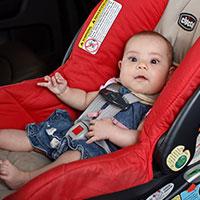Find the Car Seat Laws in Your State with this New Safe Kids Resource

This month, Safe Kids is introducing an exciting brand-new feature to safekids.org called the Child Safety Law Map. It’s an easy way to search for laws relevant to keeping kids safe.
Why Is the Child Safety Law Map So Important?
Many parents use laws in their state to define best safety practices. Unfortunately, these laws are not always easy to find. Until now. On a personal note: I like the Child Safety Law Map because my job is to fight for stronger laws—I wear the “law nerd” title with pride. But it’s also important for parents to learn the law as well as best guidelines to keep kids safe. And that’s what the Child Safety Law Map helps them do.
Child Safety Law Map is Easy to Use
To find the safety laws in your state and additional guidelines on child passenger safety, simply follow these steps:
- Go the top right corner of the Safe Kids home page and click Safety Laws (it’s right next to the blue donate button).
- Tap on your state or a state you’re traveling to.
- Scroll down the page. It will provide your state’s laws on when a child should be in a car seat and a seat belt.
- Scroll down even further and it will give you our guidelines on child passenger safety based on our evidence and tips developed by pediatricians. We give you this information because all state laws are different and perhaps no state law is perfect. This will enable you to set the laws for your car and your kids.
Does Your Law Need to be Stronger?
Another reason why the Child Safety Law Map is such a great resource is because it can help you determine if your state law should be stronger. So, for example, Pennsylvania does not require a child to sit in a rear seat and its maximum fine for a first seat belt violation is $10, which fails to send a strong message about the importance of buckling up. Cross the Delaware River and the New Jersey law is much tougher. There, children 7 years and younger and less than 57 inches tall must be in the rear seat. Plus, the maximum fine for a first seat belt violation is $46. The American Academy of Pediatricians recommends that a child should stay in the rear seat until age 13.
What’s Next?
Our goal is for this Child Safety Law Map to be the go-to resource for parents looking for the state laws in several areas important to child safety. In the next installment, we plan to provide you with laws to keep kids safe on bicycles and in school zones.
